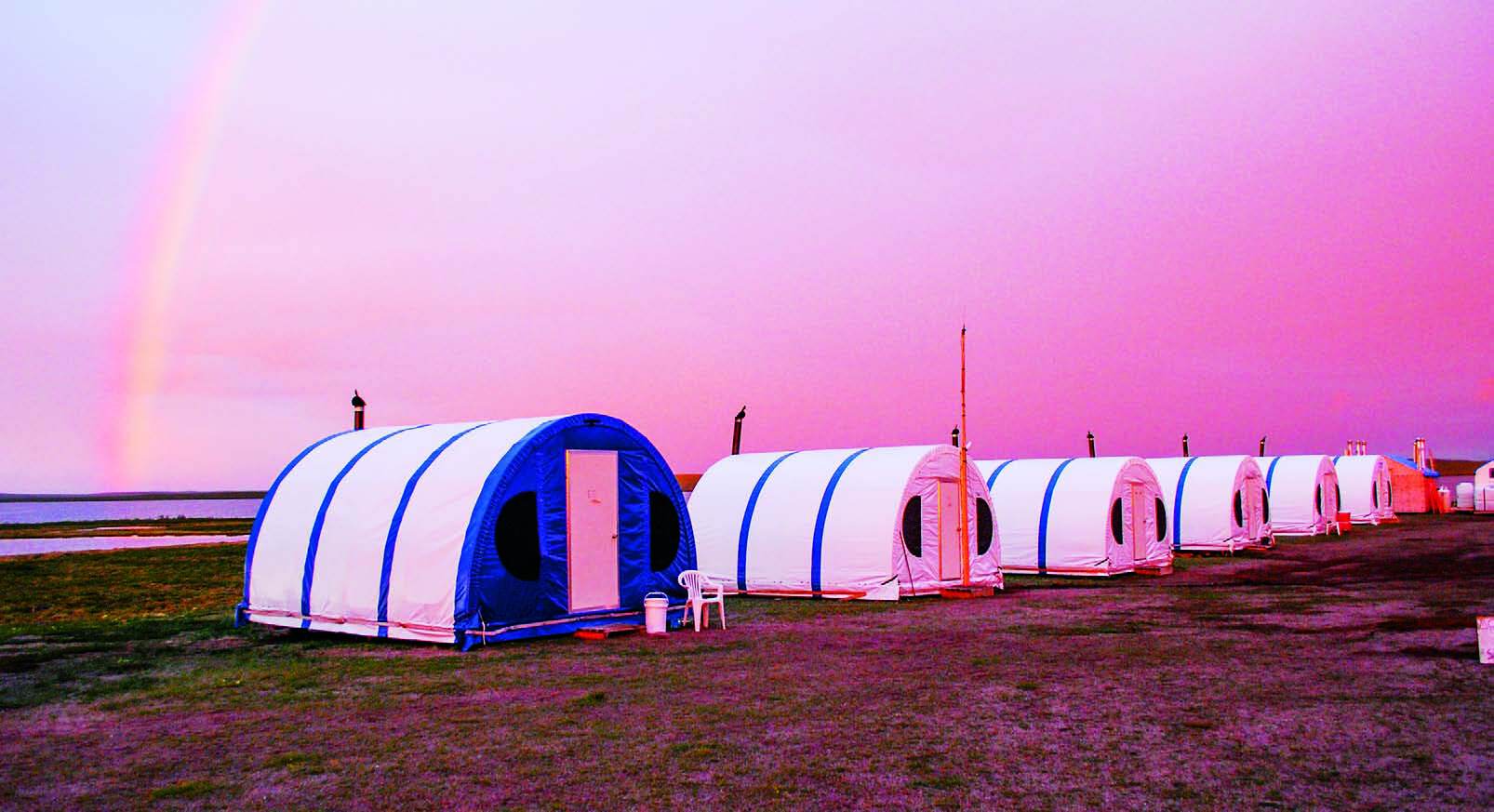
Nunavut and Saskatchewan have more in common than exceptional and diverse mineral potential. They are both attracting respectable levels of exploration spending and mining investment despite bleak capital markets – a remarkable feat for jurisdictions that once suffered from negative investor sentiment. Saskatchewan was shunned after it nationalized potash mines and created a Crown corporation to govern all mining during the 1970s. Nunavut’s initial regulatory regime was criticized for lacking clarity and certainty. So what changed, and why?
In Saskatchewan, industry and government are less polarized today and have a more balanced understanding of their respective roles in resource development. But as the province’s former finance minister Janice MacKinnon cautioned in a recent paper, parties of all stripes in the province still view resources (notably strategic resources such as potash and uranium) as “belonging to the people” and want Photograph : Kivalliq Energy Corporation development to generate economic and social benefits. Nunavut has similar views and is negotiating devolution from Ottawa to gain control of its resource wealth.
Companies mindful of these sentiments helped Saskatchewan establish a private-sector resource economy and are doing the same in Nunavut. Nunavut’s only operating mine, the Meadowbank gold mine built by Agnico Eagle Mines, helped boost investor confidence and was a catalyst for policy reforms.
“We based the timing of our entry [in 2008] on a positive shift in policy as the moratorium on uranium exploration ended,” says Jim Paterson, CEO of Kivalliq Energy Corporation. “We consider Nunavut one of the best jurisdictions in Canada and around the world. It’s also one of the most active jurisdictions in the world with many projects and players.”
Jeff Ward, president of Vancouverbased Kivalliq, notes that Nunavut accounted for 10 per cent of all exploration spending in Canada in 2012. Reports show $422.5 million was spent that year, with an estimated $249 million spent in 2013.
Nunavut’s strong performance reflects a resurgence of uranium exploration and mine development focused on the Kivalliq region near Baker Lake, which hosts deposits similar to those found in the Athabasca Basin of Saskatchewan. The most advanced is Kiggavik, a proposed mine project operated by Areva Resources Canada (a unit of Areva of France). Cameco is exploring for similar deposits in the region.
On the junior scene, Kivalliq Energy was the first company to sign an agreement to explore for uranium on Inuitowned lands in Nunavut. Its flagship Angilak project is considered Canada’s highest grade uranium resource outside of Saskatchewan’s Athabasca Basin. The inferred resource is 2.8 million tonnes grading 0.69 per cent U3O8, totalling 43.3 million pounds U3O8. The company’s discovery costs to date are $1.40 per pound, which Paterson says “beats operators in the Athabasca Basin.”

Paterson believes Nunavut has potential to become a major uranium producer similar to Saskatchewan, which boasts the highest-grade mines in the world. That will take more time and more capital he says, as Saskatchewan has a decades-long head start on both counts. As for infrastructure, a major challenge in the North, Paterson says U3O8 can be flown out or transported via a network of winter roads.
Nunavut’s emergence as “the next Saskatchewan” will depend on governments staying the course on uranium exploration. And pressure was brought to bear after the Fukushima incident, which occurred while Areva was seeking community support for its project. Areva brought community leaders to Saskatchewan to see operating uranium mines, and other companies, including Kivalliq Energy, visited communities or arranged visits to their sites to address concerns and share information.
“The positive thing was that people were interested in learning more,” Paterson says.
Uranium exploration is providing jobs in Nunavut during a period when many gold and base metal projects face financing challenges. The industry also holds the promise of long-term stability for Nunavut, just as it did for Saskatchewan.
Another development is t he Canadian-European Union free trade agreement, which opens the door to European companies interested in Canadian projects. Canada agreed to waive a requirement that European companies must have a Canadian partner in the belief that it is no longer required to safeguard Canadian interests.
Paterson says these policy changes are attracting the interest of utility and mining companies from all over the world, and will make it easier for uranium companies to raise money or form strategic alliances. “The possibilities are wide open.”
